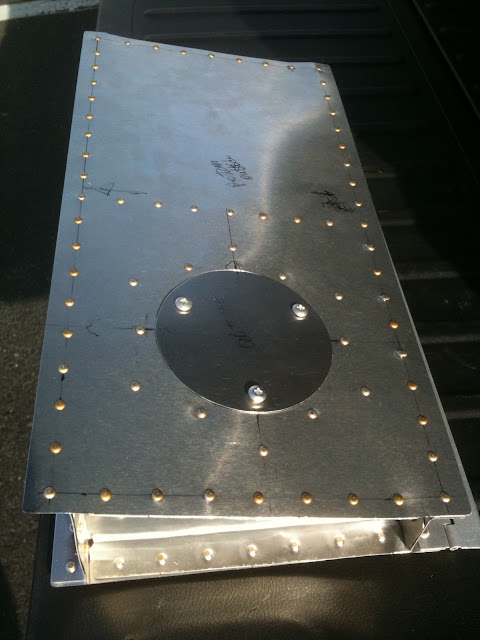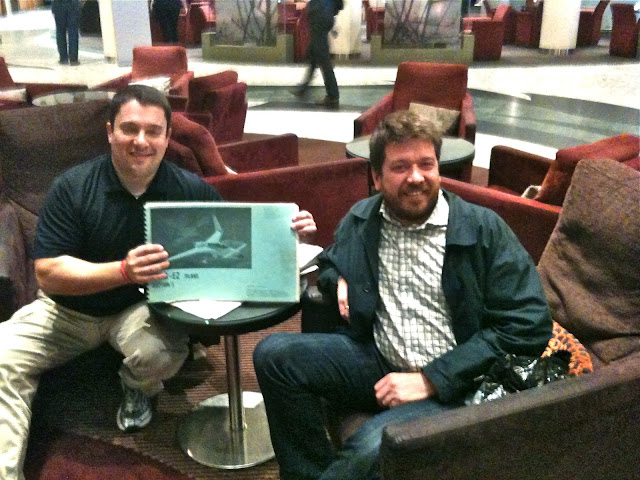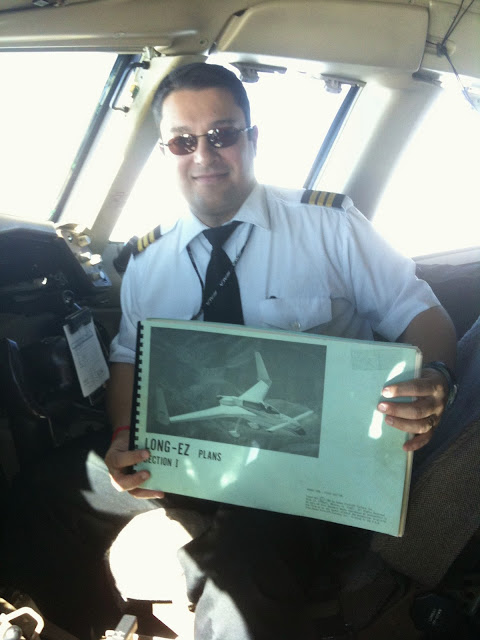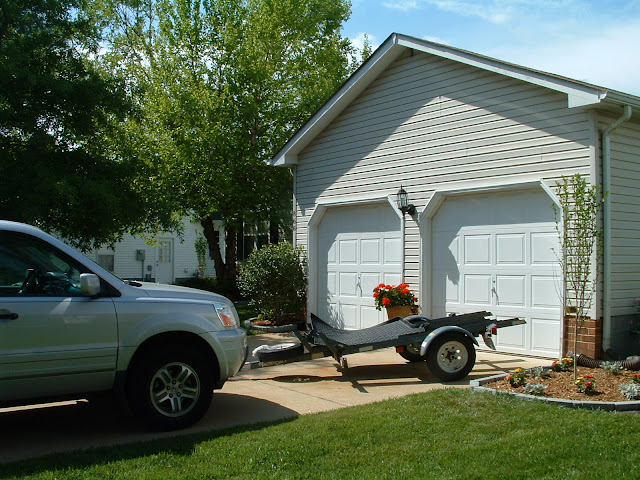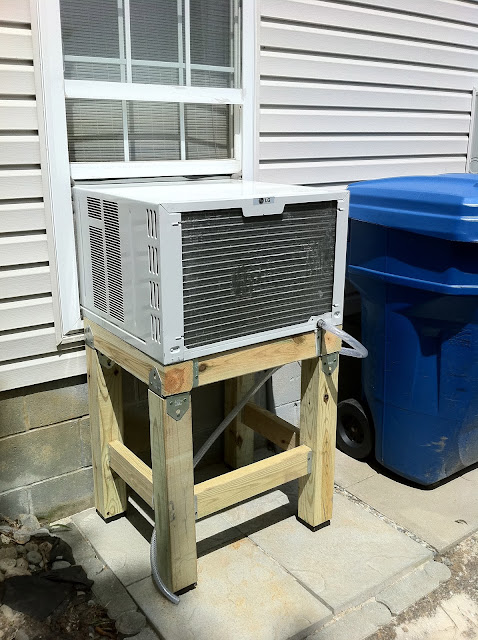Composite is a bit of a generic word, that encompasses all kinds of different materials bonded together by an agent. These materials could be fiberglass, carbon fiber, kevlar, wood, or sometimes a combination of them, depending on the specific recipe the designer cooked up for the part. The most common bonding agent is SuperGlue... ok, I was kidding! Mainly epoxy, though some very strong glues are indeed utilized in newer constructions.
Because the Long EZ uses epoxy, we will limit our discussion to it, or... should I say them, since there is an incredible variety of epoxies, and some are better suited to airplane building than others.
First of all, epoxy is made up of two parts, a resin and a hardener. So, technically, epoxy is not really epoxy until it is correctly and thoroughly mixed, usually in an 8 or 16 oz. paper cup. This is also known as "pure epoxy", as nothing else has been added to it (more on that later). The mixture ratio is specific to the brand being used, and can be measured by volume, or by weight. An electronic kitchen scale works well when mixing by weight, but a calibrated epoxy pump can be a real time saver.
Oh yeah, epoxy pumps are pretty expensive, I paid nearly $300 for this adjustable model. You can see the hardener on the left, and the resin on the right of the pump.
Because mixing of the ingredients is absolutely critical to the development of the rated strength, it is imperative that the pump be calibrated for accuracy every so often. The process might take half an hour or so, depending on how far off your pump is, but it is a pretty straight forward job. The bolts on the hardener side (left) of the pump are loosened, then the hardener canister is free to slide left or right in the slot on the frame, and along the pump lever (visible above). This process is repeated until the right spot is reached, for which pumping the lever yields the correct quantity of hardener and resin.
|
Epoxy pump calibration in action
|
As you can see during the calibration, the hardener and the resin are not mixed. This is so they can be weighed, and dumped back in their containers to be reused.
Back when, the Long EZ used an epoxy called Safe-T-Poxy, which turned out to be a misnomer, as it was found to be conducive to cancer due to one of the components in it, and ended up being discontinued around 1996. E-Z-Poxy was introduced as a replacement to Safe-T-Poxy, and was formulated without some of the carcinogenic agent, making it somewhat safer.
This is still far from safe though, and generally speaking, there are no safe epoxies, all of them are toxic, and there is a real risk of sensitization due to overexposure. Gloves are mandatory when working with epoxy, ventilation is essential, and a respirator should be used when working in enclosed spaces.
 |
| (E-Z Poxy) Read the label!!! |
| (MGS) Did you get the message yet? |
So technically, E-Z-Poxy is the epoxy that should be used on the Long EZ but, in the intervening 30 years, other epoxies were developed with similar, and sometimes better qualities. The bottom line is that Long EZs are being built with a variety of bonding agents, depending on the preference of the builder.
| Rear seat built using E-Z-Poxy |
| Rear seat built using MGS-285 |
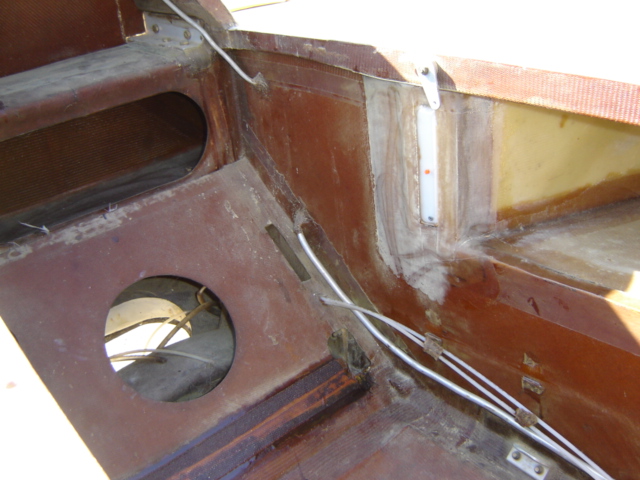 |
| Rear seat built using Aero-Poxy |
| Working on a practice piece using West System epoxy
Obviously, you couldn't have a composite construction without a second (or third) material. In our case this material is fiberglass, but not just any fiberglass, two specific types of it in particular, woven into a cloth-like form, and chosen by the designer for their specific qualities.
|
While the job of the epoxy is bonding the fiberglass strands together, the fiberglass is the actual structural material, along which the load stresses are carried, and transferred.
It might help to think of the fiberglass filaments as tiny rubberband-like materials, that can carry a load when pulled at both ends (with one difference: fiberglass does not stretch). Similarly to how a rubber-band opposes being elongated (tension), and is weak when both ends are pushed toward each other (compression), so does the fiberglass react, with excellent tension qualities, but poor compression resistance.
Once again, the epoxy is there only to bond the fibers to each other, so that the tension loads are resisted to, and more epoxy will not produce a stronger bond, just a heavier part. Quality control on the builder’s part is important to ensure the epoxy to fiberglass ratio is as low as possible without the part being too dry (50/50 is normal without vacuum bagging), and that all the fibers are laid as straight as possible (no waviness) to permit the strength of the part to develop without stretching under load.
That’s good and all, but how do these multiple layers of epoxy-impregnated fiberglass, become airplane parts, and ultimately an airplane?
Back in the day, while every other designer used the same old sheet metal, or fabric, instead of innovating aviation, Burt Rutan broke all conventions by pioneering the “moldless composite construction method” for aircraft building, now an industry standard.
| Burt Rutan and me (sort of) |
That simply means, the fiberglass is laid over another material with the shape of the part to be produced. In our case, this material is foam! Yes, foam! No, this time it's not a joke! This foam is very light (about 2 lbs per cubic foot), easily shaped with simple tools, and provides the framework for the part. The foam is somewhat similar to the blue foam used in the construction business for thermal insulation, but it is specific for airplane construction, of course.
To be precise, there are at least three to four different types of foam used in the Long EZ building, but you get the idea. The key to this system is the relative ease in shaping the parts, with nothing more than a kitchen knife and a sanding block, things most anyone would already own.
| ... or you could buy some new fancy tool to do the same thing! |
It is important to note that while the foam lends the shape to the structure, it is not a structural material, fiberglass is, but the foam provides other benefits, like resistance to "oil canning", and displaces air that would expand and contract within the part, possibly creating condensation and freezing of moisture, and perhaps cracking of the piece.
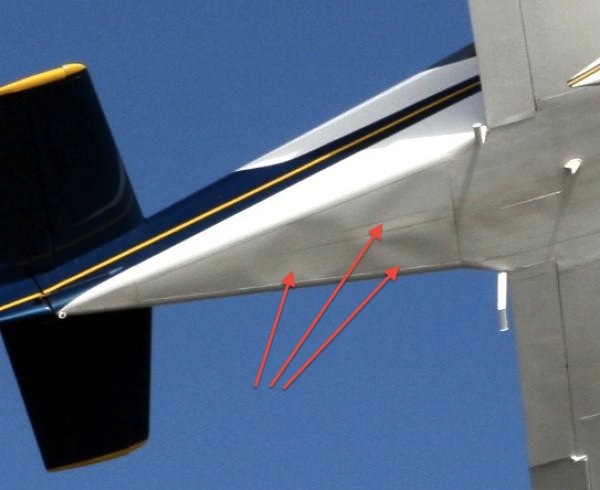 |
| "Oil canning" of sheet metal surface |
Probably one of the greatest advantages of this construction method is the ability to create rivet-free compound shapes, that would be nearly impossible to reproduce with any other material.
| Compound shape example |
Strength, resistance to corrosion, and light weight, are also composite traits that endear this construction method to the aircraft industry.

